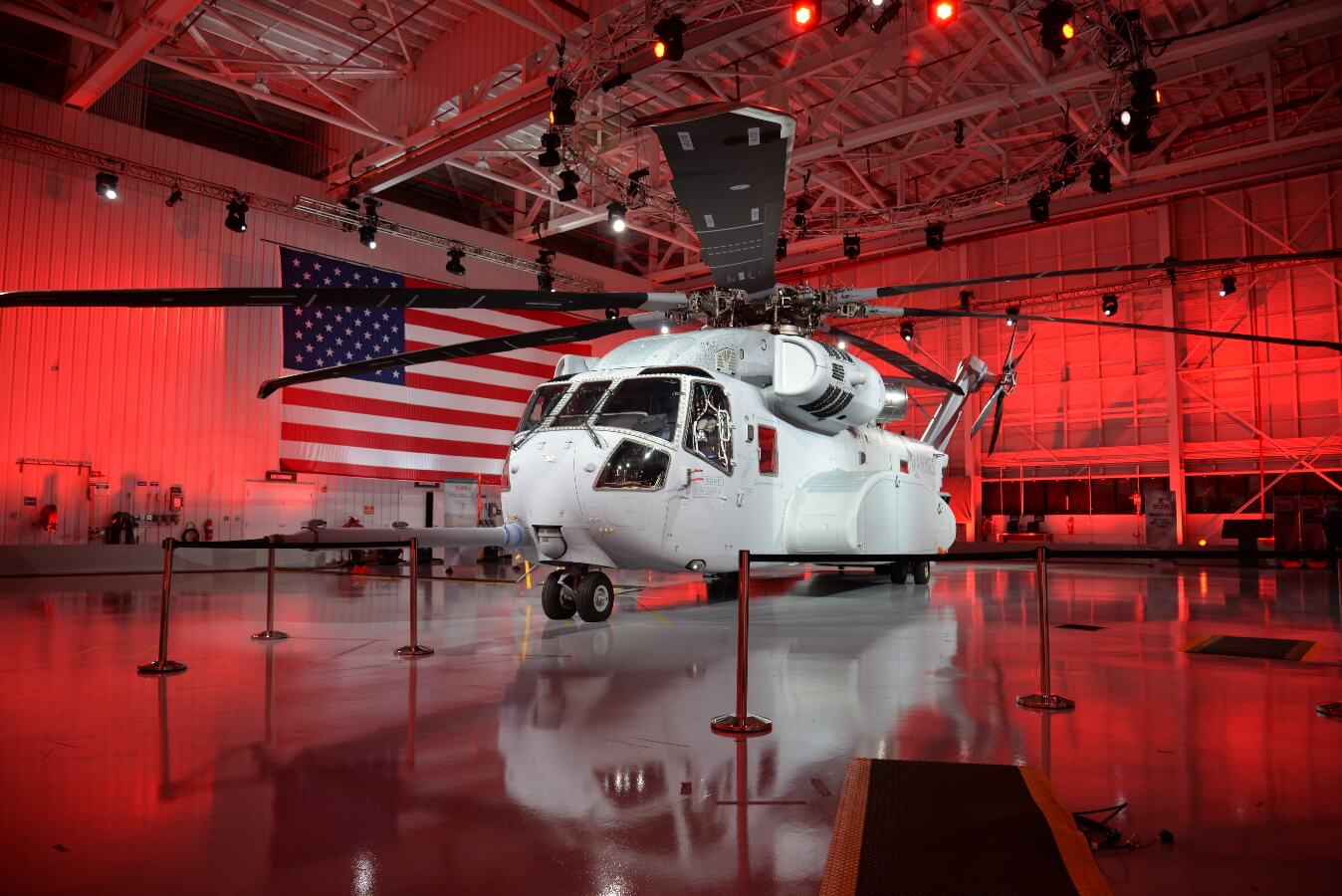Sikorsky: Made in Connecticut

Sikorsky Aircraft executive George Mitchell had a message for the state’s manufacturers at CBIA’s Oct. 27 Made in Connecticut Manufacturing Summit.
“We’re all about finding new suppliers,” Mitchell, who runs the company’s operations product centers, told an audience of 200 business leaders in Trumbull.

“We design, plan, and produce in Connecticut,” says Sikorsky executive George Mitchell.
Sikorksy has 550 suppliers within the tri-state region and 800 in New England.
“To be a supplier of ours is not easy,” Mitchell said. “It’s a rigorous process to become qualified and certified. And there’s a lot of pressure to produce on time.
“It’s a tough gig, but it’s a great process. If you get on the Black Hawk and you’re helping make everything we need for the next 30 years, it’s not a bad situation.”
Keeping Sikorsky Here
Stratford-based Sikorsky will remain a vital part of Connecticut’s economy at least through 2032 under an agreement reached between the state and Sikorsky parent Lockheed Martin and ratified by the General Assembly and labor unions last year.
The agreement brings to Connecticut production of at least 200 CH-53K King Stallion helicopters for the U.S. Marine Corps.
Sikorsky is expected to inject $6.5 billion into its supply chain under the deal, increase full-time employment in Connecticut to more than 8,000 workers, double current spending of $350 million per year with in-state suppliers, and increase capital spending by 22%.
“We have a commitment to Connecticut,” Mitchell said. “I don’t want to get too dramatic, but this was key. This was really important.
“The state of Connecticut, Lockheed, Sikorsky, and the Teamsters did the right thing.
“It had to be done. The 53K was ungodly expensive and the only way we were able to get it to the point where even the U.S. Government could afford it was to have that happen.”
Connecticut Footprint
Sikorsky symbolizes Connecticut’s long legacy of innovation, notching numerous significant historic milestones in its 100-year history, including the first helicopter flight, the first multi-engine plane, the first jet engine-powered helicopter, and the fastest helicopter.
The office of company founder Igor Sikorsky is preserved at the Stratford headquarters, complete with the first-ever issued helicopter pilot’s license and framed photographs of aviation pioneers Amelia Earhart and Charles Lindbergh.
Sikorsky employs 13,500 employees worldwide, working in 6.5 million square feet of facilities, including operations in Stratford, Bridgeport, Shelton, Trumbull, and North Haven.
The company has about 7,500 employees in the state, including 2,000 engineers and another 4,000 working in its product operations centers.
“We design the products here in Connecticut, we plan in Connecticut, we produce most of the products in Connecticut, and we sustain our customer support through Connecticut,” Mitchell said.
If you get on the Black Hawk and you're helping make everything we need for the next 30 years, it's not a bad situation.
"So we do a lot with productivity, technology, trying to come up with better ways of doing things to keep the costs under control."
Mitchell said every program Sikorsky has won generated a hiring surge, adding that the company's biggest workforce challenge was keeping younger workers "engaged, challenged, plugged in so that they become that future generation workforce."
"Our workforce comes from everywhere," he said. "We recruit locally, primarily through our career pathways program with local high schools and community colleges.
"We try to hire locally but if we can't, we go everywhere, out-of-town, out-of-state."
Business Units
Sikorsky is organized around three main business units—military aircraft, commercial, and customer support.
The UH-60 Black Hawk helicopter, which first went into production 45 years ago and has logged more than four million flying hours, is the mainstay of the company's military aircraft business.

Mitchell said bringing production of the CH-53K King Stallion helicopter to Connecticut "had to be done."
"It's a pretty long run and it will keep going," Mitchell said. "We expect to keep building Black Hawks until 2050—long into the future."
The S-92 is Sikorsky's commercial flagship, used for multiple purposes including airline travel, search and rescue missions, ferrying workers and supplies to offshore oil rigs, air ambulances, and corporate fleets.
Mitchell called the VH-92 version of the S-92—better known as Marine One, the U.S. president's helicopter—"one of our proudest programs."
"We've had that program since Dwight Eisenhower in 1955," Mitchell said. "We lost it once, but won it back and we're never going to give it away again."
Sikorsky's customer support services military and commercial customers around the world, with 24/7 phone lines, a web portal, and sophisticated analytics that predict service schedules and parts ordering.
Pursuing Innovation
Over the last three years Sikorsky has spent about $120 million in capital investments, mostly on new machinery and upgrades.
"We pride ourselves on our innovation, not only on our products, but our service and support," Mitchell said.
"In today's world, everything is digital. We send many of our suppliers an electronic model to program to, which ultimately means a better quality product that lasts longer."
On the product side, Mitchell says the company's "skunk works" research and development engineers focus on innovations that drive "speed, intelligence, and autonomy."
"It's all about aware aircraft, diagnostics, and having aircraft that basically can adapt to the mission," he said.
"So if you want to fly quiet, you want to fly fast, you want to fly slow, you hit some switches and off you go."
RELATED
EXPLORE BY CATEGORY
Stay Connected with CBIA News Digests
The latest news and information delivered directly to your inbox.


